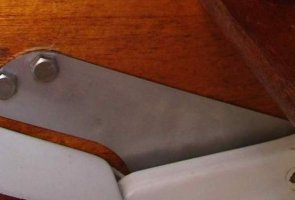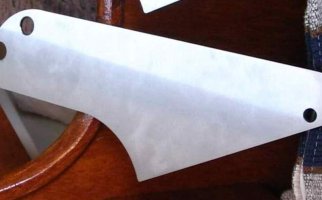tenders
Innocent Bystander
My beloved '69 E32 is starting to overwhelm me with maintenance. Last weekend I discovered that the bulkhead has turned to mush around the chainplates. The wood is solid only around the bottom one or two bolts.
I am not willing to drop $5k or more to hire somebody to disassemble all the joinery and start refabricating bulkheads. It is simply not worth it, and I don't have time to do it myself, though I am as impressed as hell at those of you who have not only done it but have documented it beautifully.
But I would be willing to attempt a less involved repair.
It is possible to repair a 3/4" bulkhead by cutting out a reasonably large area well beyond the rotten chainplate, scarfing and epoxying in a new piece of mahogany plywood (with an 8:1 taper), and remounting the chainplate?
I'm thinking this is the kind of project which can probably be done in a few days. Would I need much in the way of unusual tools beyond a jack, circular and jigsaw, and belt sander?
Theodore Enders
I am not willing to drop $5k or more to hire somebody to disassemble all the joinery and start refabricating bulkheads. It is simply not worth it, and I don't have time to do it myself, though I am as impressed as hell at those of you who have not only done it but have documented it beautifully.
But I would be willing to attempt a less involved repair.
It is possible to repair a 3/4" bulkhead by cutting out a reasonably large area well beyond the rotten chainplate, scarfing and epoxying in a new piece of mahogany plywood (with an 8:1 taper), and remounting the chainplate?
I'm thinking this is the kind of project which can probably be done in a few days. Would I need much in the way of unusual tools beyond a jack, circular and jigsaw, and belt sander?
Theodore Enders
Last edited:


